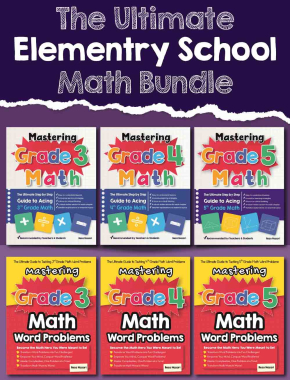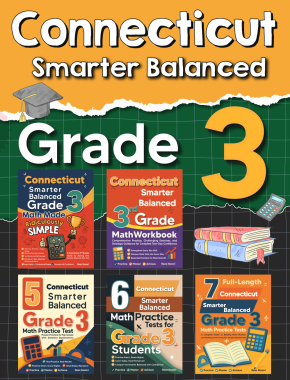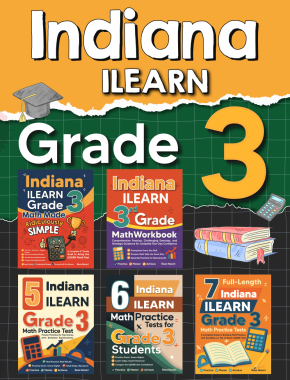How to Approximate Irrational Numbers? (+FREE Worksheet!)

- Step 1: First, we need to find the two consecutive perfect squares that the number is between. if
is our number, we can do this by writing this inequality: \(a^2< x <b^2\)
- Step 2: Take the square root of each number:\(\sqrt{a^2}< \sqrt{x} <\sqrt{b^2}\)
- Step 3: Simplify the square roots of perfect squares:\(a< \sqrt{x} <b\), then, \(\sqrt{x}\) is between \(a\) and \(b\).
- Step 4: To find a better estimate, choose some numbers between \(a\) and \(b\).
Approximating Irrational Numbers – Example 1:
Solution:
since \(\sqrt{22}\) is not a perfect square, is irrational. To approximate \(\sqrt{22}\) first, we need to find the two consecutive perfect squares that \(22\) is between. We can do this by writing this inequality: \(16< 22 <25\). Now take the square root of each number: \(\sqrt{16}< \sqrt{22} <\sqrt{25}\). Simplify the square roots of perfect squares:
\(4< \sqrt{22} <5\), then, \(\sqrt{22}\) is between \(4\) and \(5\). To find a better estimate, choose some numbers between \(4\) and \(5\) Let’s choose \(4.6\), \(4.7\) and \(4.8\).
\(4.6^2=21.16\), \(4.7^2=22.09\), \(4.8^2=23.04\), \(4.7\) is closer to \(22\). Then: \(\sqrt{22}≈4.7\)
Approximating Irrational Numbers – Example 2:
Find the approximation of \(\sqrt{74}\)
Solution:
since \(\sqrt{74}\) is not a perfect square, is irrational. To approximate \(\sqrt{74}\) first, we need to find the two consecutive perfect squares that \(74\) is between. We can do this by writing this inequality: \(64< 74 <81\). Now take the square root of each number: \(\sqrt{64}< \sqrt{74} <\sqrt{81}\). Simplify the square roots of perfect squares:
\(8< \sqrt{74} <9\), then, \(\sqrt{74}\) is between \(8\) and \(9\). To find a better estimate, choose some numbers between \(8\) and \(9\) Let’s choose \(8.5\), \(8.6\) and \(8.7\).
\(8.5^2=72.25\), \(8.6^2=73.96\), \(8.7^2=75.69\), \(8.6\) is closer to \(74\). Then: \(\sqrt{74}≈8.6\)
Approximating Irrational Numbers – Example 3:
Find the approximation of \(\sqrt{94}\)
Solution:
since \(\sqrt{94}\) is not a perfect square, is irrational. To approximate \(\sqrt{94}\) first, we need to find the two consecutive perfect squares that \(94\) is between. We can do this by writing this inequality: \(81< 94 <100\). Now take the square root of each number: \(\sqrt{81}< \sqrt{94} <\sqrt{100}\). Simplify the square roots of perfect squares:
\(9< \sqrt{94} <10\), then, \(\sqrt{94}\) is between \(9\) and \(10\). To find a better estimate, choose some numbers between \(9\) and \(10\) Let’s choose \(9.6\), \(9.7\) and \(9.8\).
\(9.6^2=92.16\), \(9.7^2=94.09\), \(9.8^2=96.04\), \(9.7\) is closer to \(94\). Then: \(\sqrt{94}≈9.7\)
Approximating Irrational Numbers – Example 4:
Find the approximation of \(\sqrt{26}\)
Solution:
since \(\sqrt{26}\) is not a perfect square, is irrational. To approximate \(\sqrt{26}\) first, we need to find the two consecutive perfect squares that \(26\) is between. We can do this by writing this inequality: \(25< 26 <36\). Now take the square root of each number: \(\sqrt{25}< \sqrt{26} <\sqrt{36}\). Simplify the square roots of perfect squares:
\(5< \sqrt{26} <6\), then, \(\sqrt{26}\) is between \(5\) and \(6\). To find a better estimate, choose some numbers between \(5\) and \(6\) Let’s choose \(5.1\), \(5.2\) and \(5.3\).
\(5.1^2=26.01\), \(5.2^2=27.04\), \(5.3^2=28.09\), \(5.1\) is closer to \(26\). Then: \(\sqrt{26}≈5.1\)
Exercises for Approximating Irrational Numbers
Find the approximation of each.
- \(\color{blue}{\sqrt{41}}\)
- \(\color{blue}{\sqrt{52}}\)
- \(\color{blue}{\sqrt{59}}\)
- \(\color{blue}{\sqrt{72}}\)
- \(\color{blue}{\sqrt{17}}\)
- \(\color{blue}{\sqrt{10}}\)
- \(\color{blue}{6.4}\)
- \(\color{blue}{7.2}\)
- \(\color{blue}{7.7}\)
- \(\color{blue}{8.5}\)
- \(\color{blue}{4.1}\)
- \(\color{blue}{3.2}\)
Related to This Article
More math articles
- The Great Math Tour: Exploring the World of Circle Graphs
- The Ultimate AP Calculus AB Course
- 5 Best Laptops for Math Students
- 8th Grade OAA Math Worksheets: FREE & Printable
- Let’s Make Math Education Relevant for Real Life
- How to Write a Formula for a Recursive Sequence
- Top 10 Math Books for Grade 4: Empowering Young Minds to Discover Numbers
- 3rd Grade ACT Aspire Math Practice Test Questions
- ASVAB Arithmetic and Mathematics Preview
- What time do SAT Scores Come out?






















What people say about "How to Approximate Irrational Numbers? (+FREE Worksheet!) - Effortless Math: We Help Students Learn to LOVE Mathematics"?
No one replied yet.